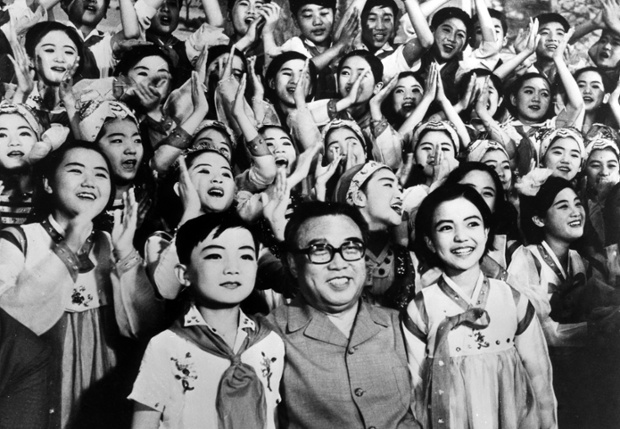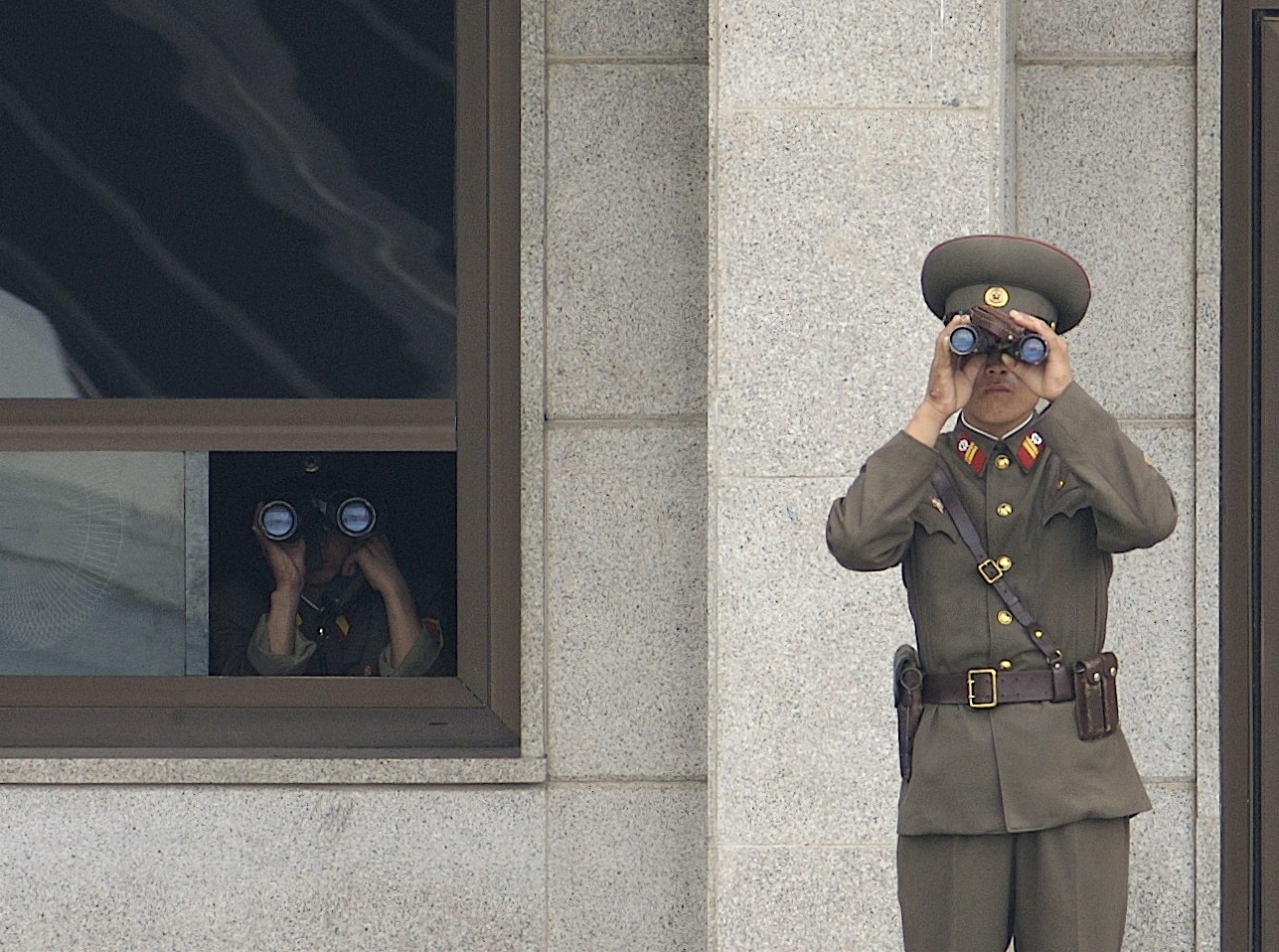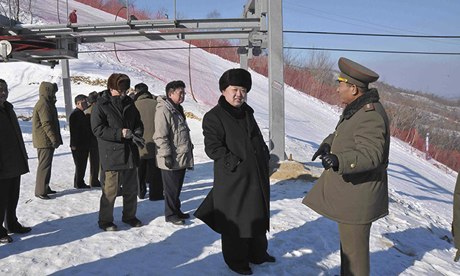Read this deconstruction of the modern North Korean state under the auspices of the Kim dynasty and you’ll see how easy it is to establish a cult of personality of messianic proportions.
From the Guardian:
In 1994, as it descended into famine, the Democratic People’s Republic of Korea (DPRK) spent millions of dollars raising a ziggurat on top of the mausoleum of Tangun, the founder of the ancient Korean Kojoson dynasty. Despite other more pressing matters, the regime felt it had urgent reasons to commemorate the life of a man whose reign began in 2,333 BC.
Unlike later Korean kingdoms, Tangun’s capital was close to Pyongyang, not Seoul. And so, in 1994, as South Korea blazed ahead in the battle for economic and political legitimacy on the Korean peninsula, the North reached into the past to claim its own.
It was said Tangun’s father had come to earth from heaven near the holy Mount Paektu on North Korea’s border with China. And despite all evidence to the contrary, it was also claimed as the birthplace of North Korea’s late leader Kim Jong-il, and its “founding father” Kim Il-sung’s base for his anti-Japanese guerrilla struggle.
When it came into being in 1948, official history writers dated Kim Il-sung’s Korea back to the year of his own birth. The now familiar Juche calendar, inaugurated in 1997, recalculated time from the year Kim Il-sung was said to have come to earth from heaven in 1912. Like some ancient creation myth newly minted, time itself began, or was renewed, with the birth of Kim Il-sung.
Equally importantly, in 1994 the renovation of Tangun’s Tomb coincided with another multi-million dollar renovation of the Kumsusan Memorial Palace, in which the embalmed body of Kim Il-sung would be displayed, preserving him as the country’s Eternal President.
To this day, the childhood hagiography of Kim Il-sung remains one of the key didactic tools of the North Korean state. The stories of his childhood resound from the walls of “Kim Il-sung Research Institutes” in schools, to the books children enjoy, to the texts electronically loaded on their Samjiyeon tablets.
He was born an ordinary man named Kim Song-ju on 15 April 1912, at the zenith of western and Japanese imperialism. In the first of his eight-volume memoir, he describes the era before his birth as a time of subjugation and national humiliation for the Korean race, and trumpets the new era of his guerrilla struggle.
Yet his birth also coincided with an omen of imperialism’s doom; it was the day the Titanic disappeared beneath the waters of the North Atlantic. In North Korea’s revolutionary cosmology, there is no such thing as chance. There is only destiny.
According to Kim Il-sung, his great-grandfather moved from North Jeolla Province, settling his family in Mangyongdae, then a village on the outskirts of the capital Pyongyang. For generations his family laboured there as farmers and grave keepers, and their suffering would come to symbolise the Korean nation under feudalism and Japanese imperialism. Kim describing them as “the epitome of the misfortune and distress that befell our people after they lost their country”.
In the memoir, Kim Il-sung’s childhood reminiscences lurch from affectations of modesty to statements of self-aggrandisement. In his preface, for example, the Great Leader claims: “I have never considered my life to be extraordinary.” Two pages later he declares: “my whole life… is the epitome of the history of my country and my people.”
Kim even insists it was his own great-grandfather who led the attack on the General Sherman when it sailed the Taedong into Pyongyang in 1866, achieving one of Korea’s first great victories against western economic and military might. Kim’s ancestors glories foreshadow the greater ones to come.
The greatest influence upon the young Kim Il-sung is said to be his father, Kim Hyong-jik. A charismatic teacher and self-taught physician, Kim Hyong-jik becomes a prophetic figure in the history of his nation, raising an heir who will return as saviour to a liberated homeland.
Kim Il-sung’s account says he prepared for his vocation from a tender age; he recalls vowing to defeat the forces of imperialism at the age of five, when he was playing on a swing in his mother’s arms. There could be no clearer distillation of North Korean children’s culture, rehearsed to this day via the Korean Children’s Union and military games in which toddlers and primary school students eviscerate effigies of American and Japanese imperialists. In the revolutionary imagination there is no difference between warriors and innocents.
He wrote himself into the history of the March 1st Movement of 1919, when Korean protests against Japanese imperial rule were violently crushed. “I, then six years old, also joined the ranks of demonstrators,” he says. “When the adults cheered for independence, I joined them. The enemy used swords and guns indiscriminately against the masses … This was the day when I witnessed Korean blood being spilled for the first time. My young heart burned with indignation.”
From that point, the Kim family’s instinctive resistance to Japanese imperialism becomes increasingly bound to the political vision articulated by the Soviet Union. Kim Il-sung recalls his father’s realisation that “the national liberation movement in our country should shift from a nationalist movement to a communist movement.” Instead of bedtime stories of old Korea, his father teaches Kim of Lenin and the October Revolution.
In a series of semi-comic interludes, the young Kim Il-sung scores early victories against the enemy, setting the model for countless juvenile heroes in North Korean children’s literature. For instance, he recalls “wrestling with a Japanese boy bigger than me who I got down with a belly throw.”
In other acts of resistance, Kim lines roads with spikes to tear the wheels of Japanese police bicycles, and defaces Japanese primary school textbooks in protest at linguistic imperialism. Such antics are undoubtedly exaggerated, yet the hagiography is careful to limit Kim Il-sung’s proto-guerrilla struggle to plausible feats of childhood derring-do. Unlike his son, Kim Jong-il, he is not depicted as a Napoleonic genius at 10 years-old.
Kim Hyong-jik does not live to see Korea free with his own eyes. Before he dies in exile in Manchuria, he issues a command to his now 14-year-old son: “You must not forget that you belong to the country and the people. You must win back your country at all costs, even if your bones are broken and your bodies are torn apart.”
Despite his father’s rousing words, Kim Il-sung is still too young to lead a guerrilla war that many North Koreans, until recently, could still recall from living memory. So before Kim’s war begins he studies in Manchuria, albeit in a middle school transformed into a kind of revolutionary Hogwarts.
Even today, the legend of Yuwen Middle School endures. During Kim Jong-il’s state visit to China in September 2010 he detoured to Jilin, undertaking a pilgrimage to his father’s school. There, according to state television, the Dear Leader became “immersed in thoughts while looking at the precious historic objects that contain the bodily odour of our Supreme Leader from his school years some 80 years back.” It was an exquisite act of political theatre. Only days later, returning to Pyongyang, Kim Jong-il revealed that Kim Jong-un would be his young successor.
Read the entire article here.
Image: Kim il-sung and adoring children. Courtesy of AP.






